
Shopping for groceries online was a growing trend even before the coronavirus hit. According to a study conducted by the data research site Statista, the amount spent on online grocery orders in the U.S. was expected to soar from $14.2 billion in 2017 to $29.7 billion by 2021. And that number was on track to reach almost $60 billion by 2023, according to one study of online U.S. grocery shopping statistics and trends.
Today, it seems reasonable to assume that those estimates might actually be too low. Needless to say, concerns about in-person grocery shopping in the face of the pandemic have only increased demand for delivery. For instance, sales for the major provider in the field, Instacart, more than doubled just between February and March this year.
For convenience as well as safety, getting bags or boxes of food and household necessities brought to your doorstep is obviously an increasingly attractive option. But how should you handle these items once they’ve arrived?
Click here for 10 mistakes you’re probably making when cleaning your groceries.
Most experts agree that there is little risk of coronavirus transmission through food or its packaging, and point out that high-touch surfaces in grocery stores — like shopping carts and baskets — are potentially more dangerous. Thus, avoiding those by ordering from home cuts your risk considerably. Also worth knowing are these 16 tips to prevent coronavirus and other viral infections.
On the other hand, as California food safety expert Jeff Nelken recently told the New York Times, “[I]t’s safe to assume that if a piece of produce has been out [at the market], it’s been handled by at least 10 people” — and the same is likely to be true of that jar of peanut butter or that box of cereal. So why take a chance, whether you buy your groceries from the neighborhood minimart or from one of the best grocery store chains in every state?
If you want to be extra-safe (and who doesn’t?), cleaning the contents of those home-delivered bags and boxes is probably a good idea. Even people who are already doing this, however, sometimes make rookie mistakes along the way.
While some of the measures recommended here might seem excessive, they’re worth considering if you want to be extra-careful — especially if you’re particularly vulnerable because of age or a medical condition.

1. You’re not specifying no-contact delivery
Like their counterparts delivering ready-made food from restaurants, virtually all grocery delivery services offer no-contact delivery. That means that your order is left on your doorstep, eliminating the need for you to have any direct interaction with the delivery person. Some services consider no-contact delivery the default option, but in other cases you may need to specifically request it when you order.
[in-text-ad]

2. You’re not using a dedicated unpacking and cleaning area
Once you bring your order inside, where do you put it? If you just set it down on the counter and then don’t thoroughly disinfect the surface later, you’re taking a chance of contamination. Before bringing things inside, designate a defined area so you know exactly what to clean when you’re finished. Some people use their kitchen sink, because it’s easier to disinfect. Others clear off a portion of the counter or dining room table. (To make cleanup easier, you can also spread newspaper on the surface before setting anything down, then carefully discard the paper when you’re done.)
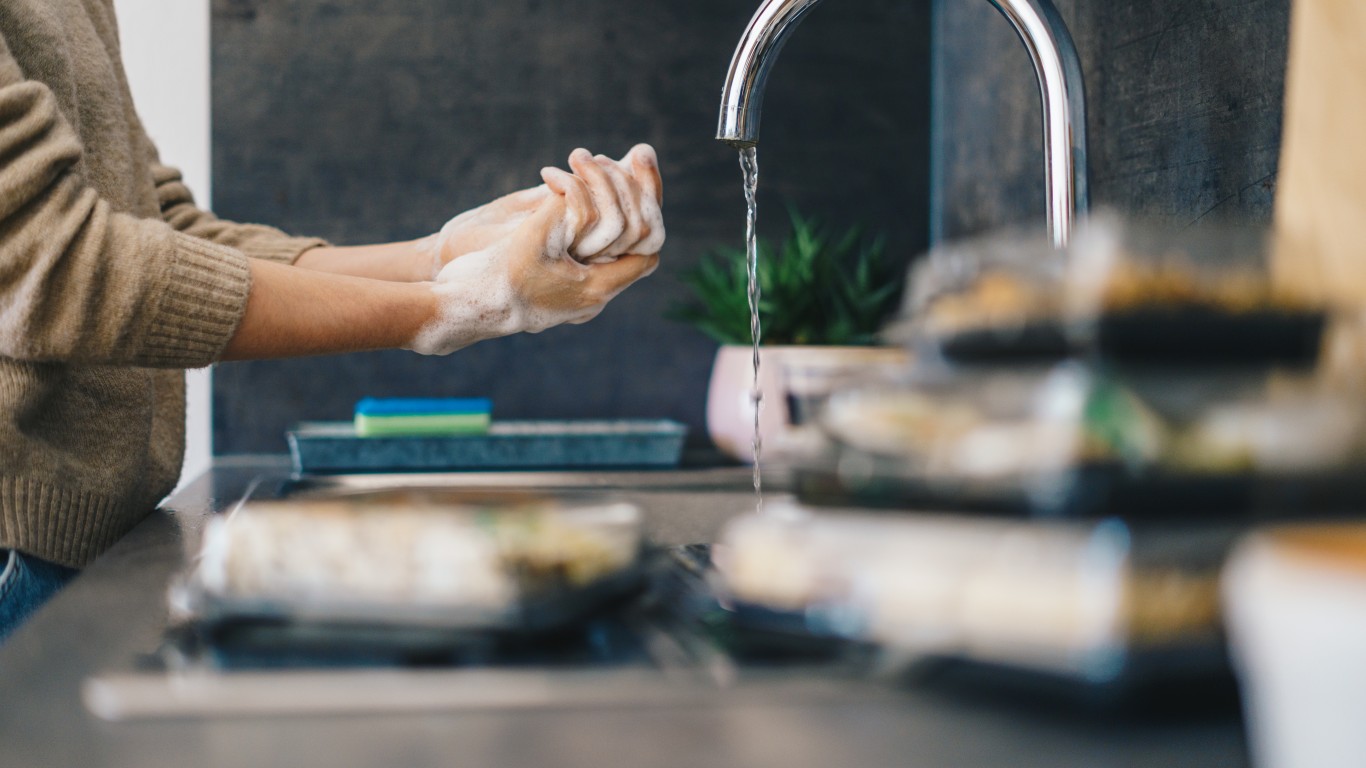
3. You’re not washing your hands before cleaning your order
You’ve heard this time and again in recent months, but you can’t wash your hands often enough. Other than breathing in the virus, the most common method of transmission is apparently through touching an infected surface and then touching your face. We all touch our faces more often than we realize, so the cleaner our hands are at all times, the better. After you’ve unpacked but before you start cleaning, wash your hands in warm water, with soap, for at least 20 seconds.

4. You’re not wiping down packaging
Some food safety experts think disinfecting groceries is being overly cautious, but to be safe — and remembering that your food has probably been touched by at least a few people (stock clerks, other customers, your delivery shopper) — it’s a good idea to thoroughly wash packaging or swab it with a disinfectant wipe, and to wash produce thoroughly.
[in-text-ad-2]
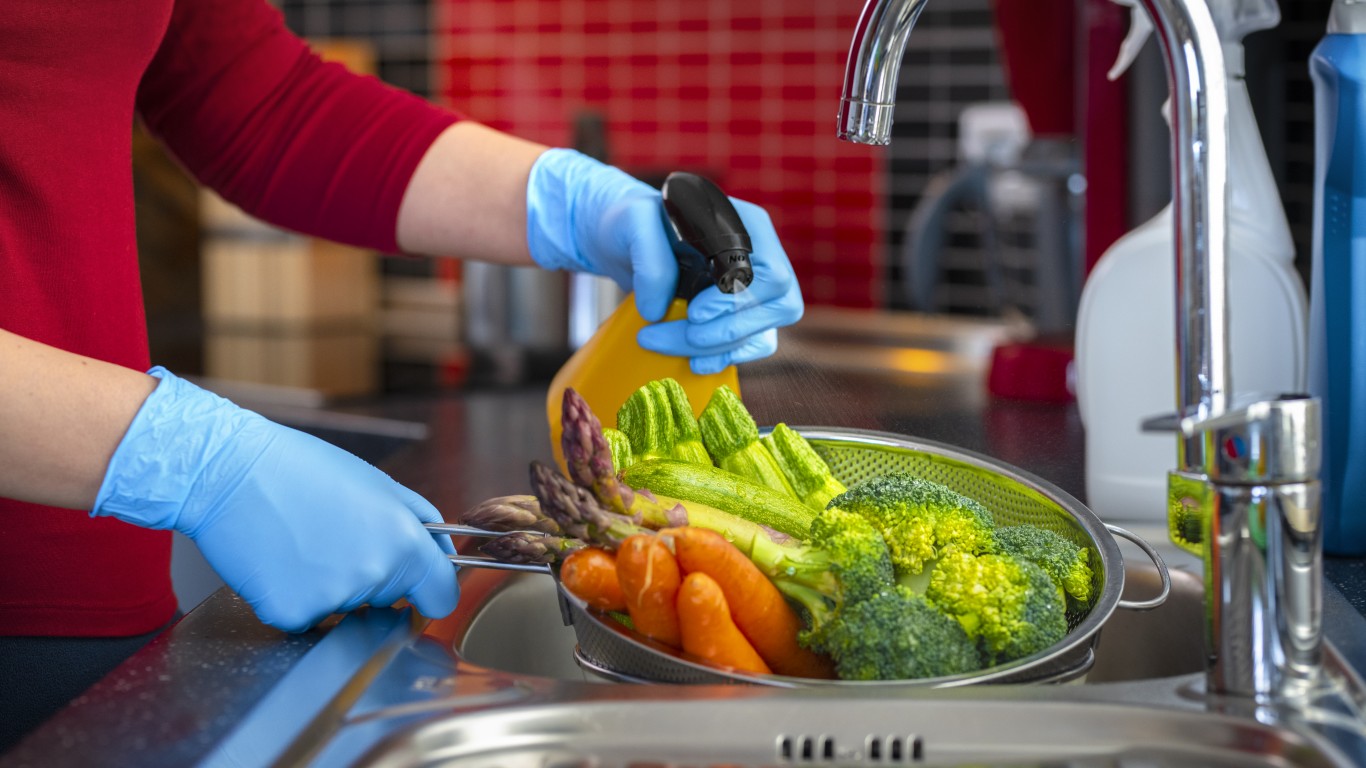
5. You’re using chemical disinfectants on produce
Chemical wipes and sprays are great tools for disinfecting surfaces, from countertops to food packaging to anything else that people regularly touch (door handles, light switches, etc.). It emphatically should not be used on fruits and vegetables, however, or directly on anything else you plan to eat (the surface of meats, for example). Even if you wash items after using disinfectants, some residue might remain, and it can make you sick.
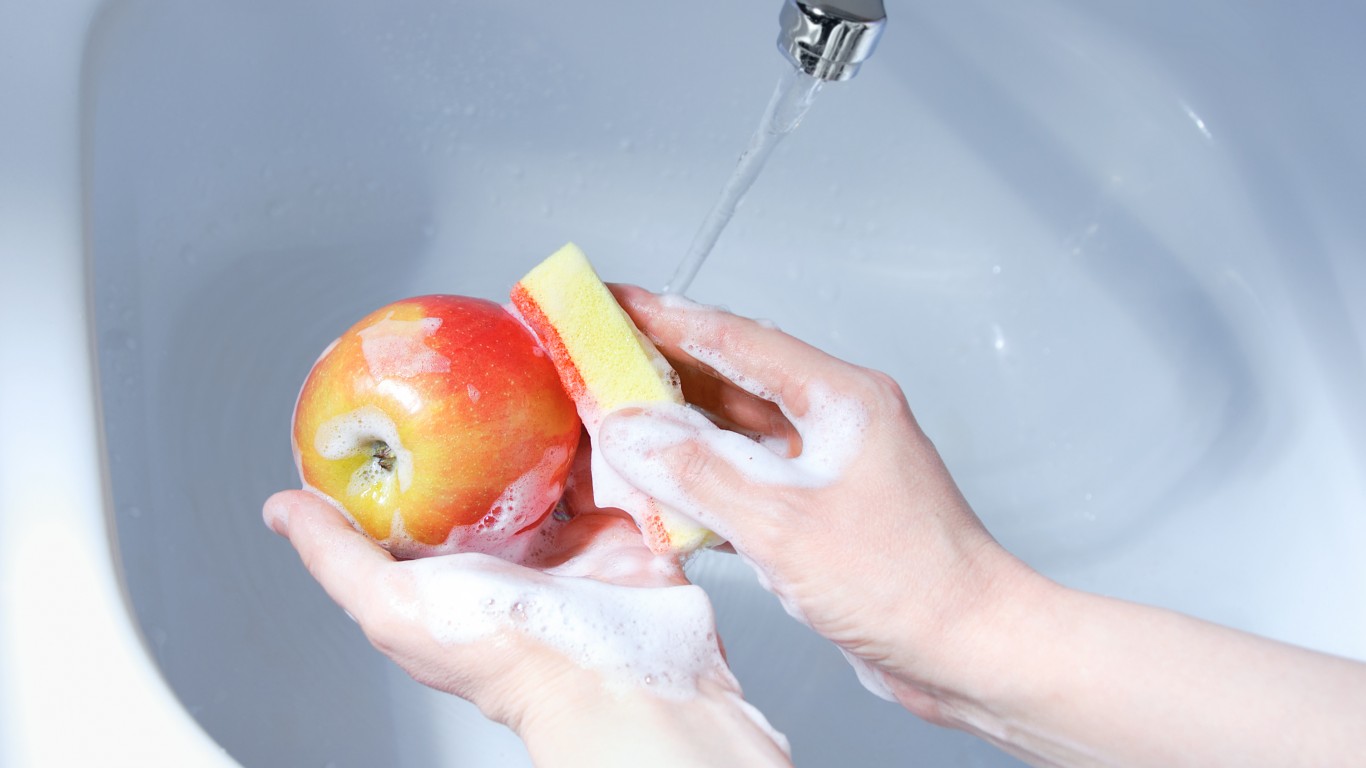
6. You’re using soap on produce
Since you can’t use disinfectant on produce, should you wash it with soap and water as you would your hands? No, say experts like Don Schaffner, a Rutgers professor of food microbiology and host of the podcast “Food Safety Talk.” “Accidentally ingesting soap can cause nausea, vomiting, and diarrhea,” says Schaffner. Instead, rinse it thoroughly in warm water, using your hands or (for sturdy produce) a brush, then pat it dry with paper towels.
[in-text-ad]

7. You’re not handling the empty grocery bags or boxes correctly
Once everything is out of the bags or boxes, what do you do with them? Whether you plan to reuse them yourself or recycle them, let them sit, out of the way, to allow any harmful residue to dissipate. According to a recent British study, the coronavirus can live on paper for three hours and on cardboard for up to 24, so after that they should be safe to handle.

8. You’re not disinfecting your unpacking and cleaning area after use
Once you’ve got everything unpacked and put away, remember to use disinfectant (spray or a wipe) on the service the bags or boxes were sitting on, just to be extra careful.
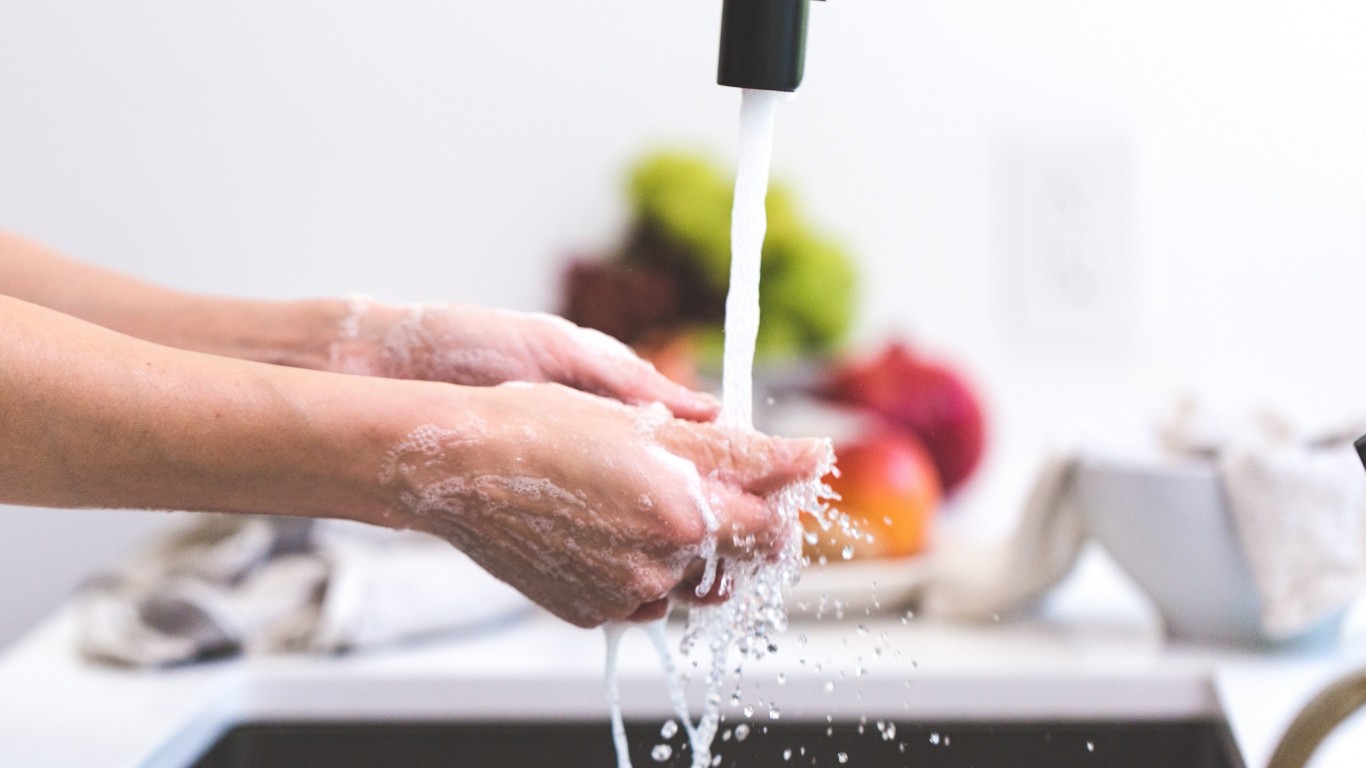
9. You’re not washing your hands after unpacking your order
Now comes the last important step. You guessed it: washing your hands again, using warm water and soap, for at least 20 seconds. Numerous online tutorials demonstrate the best techniques.
[in-text-ad-2]
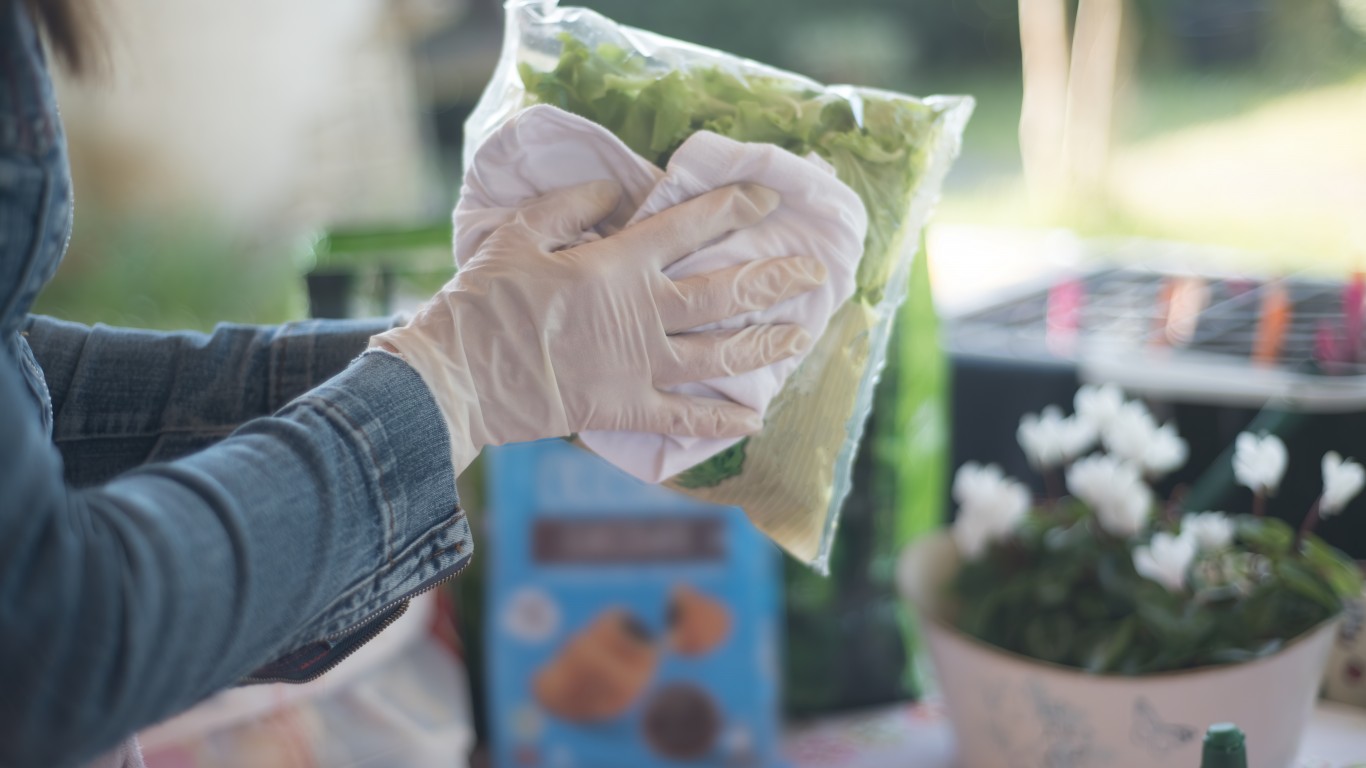
10. You’re going overboard
One final note: You’re cleaning your groceries because you want to be especially cautious, and that’s a good thing. But don’t get crazy about it. Every tiny corner of every package doesn’t need attention (concentrate on the parts that people would normally hold when picking it up), and as long as you wash your hands thoroughly (and often), your chances of picking up the virus from the surfaces of groceries or anything else are small.
Take Charge of Your Retirement In Just A Few Minutes (Sponsor)
Retirement planning doesn’t have to feel overwhelming. The key is finding expert guidance—and SmartAsset’s simple quiz makes it easier than ever for you to connect with a vetted financial advisor.
Here’s how it works:
- Answer a Few Simple Questions. Tell us a bit about your goals and preferences—it only takes a few minutes!
- Get Matched with Vetted Advisors Our smart tool matches you with up to three pre-screened, vetted advisors who serve your area and are held to a fiduciary standard to act in your best interests. Click here to begin
- Choose Your Fit Review their profiles, schedule an introductory call (or meet in person), and select the advisor who feel is right for you.
Why wait? Start building the retirement you’ve always dreamed of. Click here to get started today!
Thank you for reading! Have some feedback for us?
Contact the 24/7 Wall St. editorial team.
 24/7 Wall St.
24/7 Wall St.

